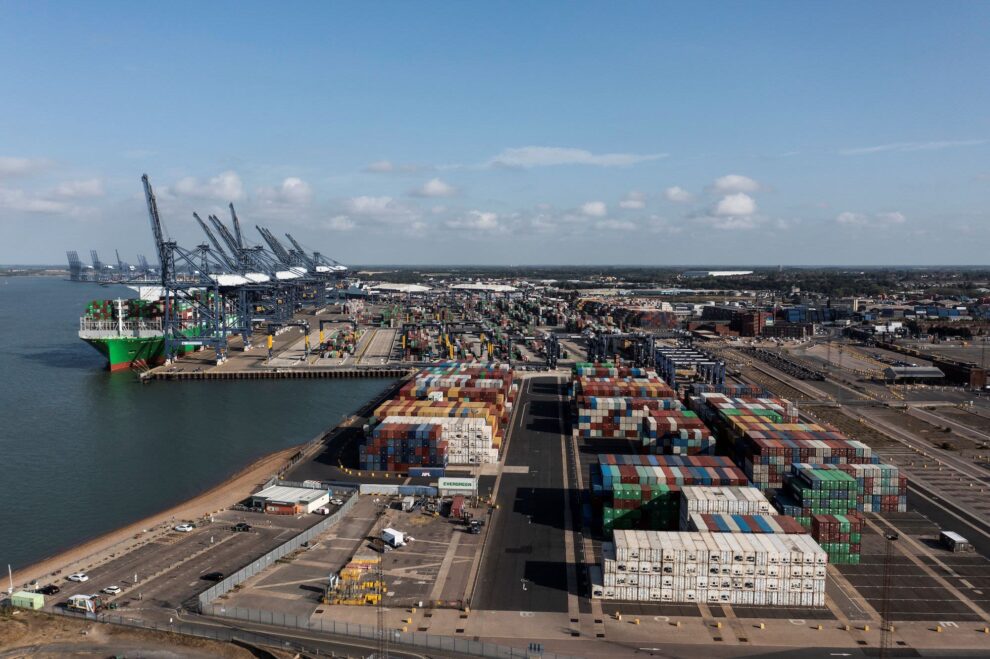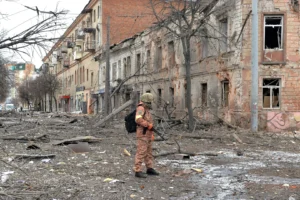In Luxembourg every journey is free and Barcelona is halving already low prices. But Irish commuters say patchy networks deter them more than cost
The train departs Dublin punctually and glides west through sunlit, verdant countryside, like a glossy advertisement for Irish Rail. Some passengers snooze, others read or chat or simply gaze at the meadows flashing past.
Daisy Arrey, a 19-year-old student heading to Longford, finds the journey relaxing and cheap. Karen Mulligan, 38, returning home to Mullingar after an excursion to the capital, is glad to have avoided motorway tolls and parking hassles. Tom and Marita, a couple in their 60s on their way to Edgeworthstown, appreciate not having to navigate twisting rural roads.
This train, which terminates in Sligo on the Atlantic coast, seems a showcase for public transport and progress in Ireland’s effort to wean people off cars to reduce carbon emissions.
Fares on Irish public transport were cut by 20% in April until the end of this year and halved permanently for those aged 19 to 23 – the first such reductions in Ireland since 1947. Anecdotal evidence suggests increased ridership on several routes, according to analysts.
It is part of a Europe-wide experiment. Germany’s “€9 ticket” project grants a month of unlimited travel on urban and regional networks. Spain is making some commuter routes free from September until the end of the year. Austria’s “climate ticket” grants access across its network for €3 a day.
Small but useful innovations await travellers bound for Sligo: the station has a new bicycle storage facility and the town has a new e-bike rental service, part of Ireland’s wider efforts to promote climate-friendly transport.
But the same passengers, however, reveal blotches in this rosy portrait. Arrey has experienced harassment on buses and hopes to get a car.
The only way Mulligan, who lives in an isolated area, can reach her job is by driving. Tom and Marita are heading to Edgeworthstown to buy a car, their third vehicle.
All would like to drive less or not at all – to save money and help the climate – but Ireland’s patchy public transport network has left them dependent on cars. This train journey is the exception, not the rule.
That is the reality for many people in Ireland, and one reason its greenhouse gas emissions continue to rise, imperilling climate targets.
“There has been a lack of investment in public transport over the past decade to provide an alternative to the car,” said Brian Caulfield, a Trinity College Dublin professor and authority on transport policy. Rural areas tend to be served, if at all, by infrequent buses, he said. “In that case the car will always win.”
The challenge is urgent. Ireland’s emissions rose 4.7% last year, the Environmental Protection Agency disclosed last week, exceeding pre-pandemic 2019 levels and casting doubt over ambitious and legally binding 2030 targets. Under sectoral targets transport, the second biggest emitter after agriculture, must reduce emissions by 50%.
Ireland has the fourth highest level of transport emissions per capita in Europe, with private cars the largest contributors. Seventy-four per cent of all journeys are by car and just 7% by rail and bus, according to the Green party, which is part of the coalition government.
“The noose around transport will gradually tighten,” said John Sweeney, a climate expert and geography professor at Maynooth University.
Part of the strategy is to dramatically increase the number of electric cars but people in rural areas are proving hesitant because of cost and lack of charging points. “If you were in the countryside you’d be banjaxed. You can’t plug it into a ditch, you can’t plug it into a cow,” said Derek Desmond, 50, a handyman from Tipperary.
That puts further pressure on buses and trains to fill the gap – a tall order. “We’re not like Germany, we don’t have a very good public transport infrastructure,” said Cara Augustenborg, an environmental scientist at University College Dublin.
Encouraging use by making public transport free, as in Luxembourg, is not viable, she said. “We need money to make the infrastructure great. We need the revenue.” In any case erratic connections, speed and reliability deterred passengers more than cost, said Augustenborg. Loutish behaviour – ranging from loud music to sexual and racial harassment – doesn’t help.
For people like John Cullen, 78, who has underlying health conditions, Covid is another deterrent. He appreciates the climate role of trains and buses but has shunned them since the pandemic despite public transport being free for those over 66. “Non-death comes first.”
Dublin, and to a lesser extent other cities such as Cork and Galway, have growing public transport options. The government recently announced light railway extensions and a new underground line to Dublin airport, to be completed by 2034.
Caulfield says the railway expansions may end up delayed or cancelled but is enthusiastic about a revamping of Dublin bus services. “This is the one project that will change the city quite significantly for the better.” Public hostility to new bus lanes – which required clearing trees and gardens – has dissipated, he said. “People want good public transport.”
In the countryside you’d be banjaxed. You can’t plug an electric car into a ditch, you can’t plug it into a cow
The main challenge is in rural areas where unplanned ribbon development has scattered homes across the landscape, far from bus routes. “More imagination will need to be shown,” said Sweeney. He cited other European countries that have introduced small mobile buses and turned postal vehicles into de facto shuttle buses. “Frequency and reliability are crucial. It will need a radical overhaul.”
Back on the Dublin to Sligo train, passengers could only agree. “I’d take the bus or cycle to work if I could,” said Mulligan, who lives six miles from her job, on a busy road with no bike lane.
From their Limerick home Tom and Marita had taken a bus and a train to Dublin and crossed the capital in a tram to catch this other train to their destination. Six hours to traverse 100 miles – slow but smooth enough, they said. They were on a mission to collect a new car for Marita, in addition to Tom’s car and work van, vehicles they felt they could not do without.
Arrey said much as she liked the idea of public transport, she looked forward to her driving test. “You don’t always want to be sitting beside strangers.”
… meanwhile in Luxembourg
Germany’s €9 flat rate monthly train fare may have attracted global headlines but Luxembourg is the pioneer of an even more radical experiment. From 1 March 2020 it made all public transport free – for its 650,000 residents, commuting workers and tourists alike. A fortnight later the country went into lockdown, leaving all those free buses, trams and trains sitting idle for months.
Two years on however, with the climate emergency deepening and Europe facing a winter energy crisis, Luxembourg’s world-first move seems prescient if not visionary. The country’s minister for mobility, François Bausch, a Green party politician, told MPs recently that the government’s aim was to achieve a transport “revolution” and ticketless transport was the “cherry on the cake”. The scheme costs €41m annually in lost revenue, which is less than 10% of the network’s €491m operating costs, he said.
If the Liberal-Socialist-Green coalition abolished fares as a social and environmental measure, ministers know it won’t on its own solve Luxembourg’s dire road congestion. Not only has Luxembourg the highest rate of private car ownership in the EU (682 per 1000) but 220,000 commuters from Belgium, France and Germany cross the borders of the Grand duchy every day to get to and from work. High housing costs in Luxembourg are blamed for the mass commute and most cars carry a single occupant.
Nor has free transport yet done much to improve Luxembourg’s seventh place ranking among the world’s largest carbon emitters, with 4.8m tonnes of CO2 equivalent produced in 2020 (15.3 metric tonnes per capita).
Indeed, trucks and cars from surrounding countries cross into Luxembourg every day for “fuel tourism”, taking advantage of cheap petrol and diesel and generating more than €1bn in tax revenues for the Grand duchy’s treasury. Luxembourg is now bound to slash transport emissions by 57% by 2030.
Clément, 26, lives in Beaufort in the north of Luxembourg and uses the bus and tram to get to work in the capital. “When I leave home I don’t need to worry about having my ticket with me or having to stamp it,” he says. He also finds that people are less aggressive: “Because there is less interaction with the bus drivers and ticket inspectors.” One regret he has is that pedestrians seem less keen to walk anywhere: “If a tram or a bus stop is close by, they will get on, rather than walking further to their destination”.
Promoting Luxembourg’s global image is also a factor in the decision to abolish fares. In 2013, the Grand-Duchy launched a nation branding exercise, to enhance its international reputation. It regularly announces measures that make the buzz: decriminalising the growing of weed in 2018 and offering free daycare and school lunches from September on.
Marc Auxenfants in Luxembourg City
… and in Spain
The Spanish government announced this month that some commuter routes on the state-owned rail-network, Renfe will be free from September until the end of the year. A 30% discount on public transport nationally had already been introduced.
In Barcelona, public transport is already excellent and cheap compared with other big cities but the mayor, Ada Colau, on a mission to reduce car traffic, is now halving metro fares. From September to December 2022, a 10-trip metro travel card that will take passengers almost anywhere in the city will cost a mere €5.70, compared with the current fare of €11.30. A monthly ticket will go from €40 to €20.
No one knows how it will function in practice. For example, how do travellers buy a free ticket from a machine? Will it apply to residents only or will Spanish taxpayers be subsidising free travel for tourists?
Not everyone in Barcelona is happy. “Colau declares war on cars” is just one of many recent headlines in a sustained media campaign against Colau’s policies for making the city more people-friendly. Barcelona has Europe’s highest density of car ownership (6,000 a square km) and has some of the continent’s worst traffic noise and air pollution. Private vehicles account for about 20% of journeys.
The automobile association and conservative politicians accuse Colau of denying citizens the “right” to a parking space and claim that banning aged, polluting cars from the city discriminates against the least well off.
They even complain about cycle lanes, which have increased from 121km (75 miles) to about 300km during Colau’s mandate.
Barcelona’s flagship policy, which has attracted interest from around the world, is its superblocks, where groups of nine city blocks are transformed into people-friendly spaces, with benches, play areas and gardens. Cars may enter but cannot transit the superblock.
Source: The Guardian











